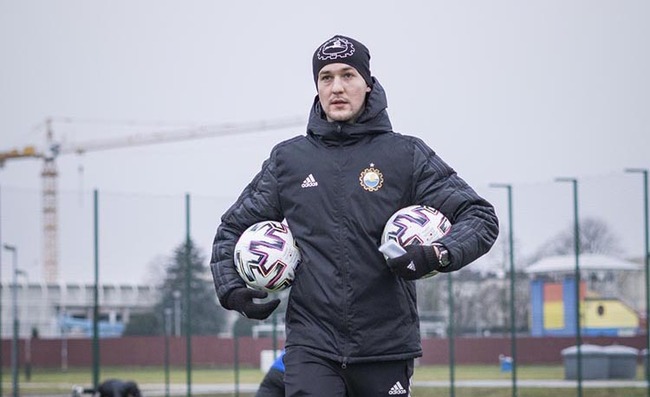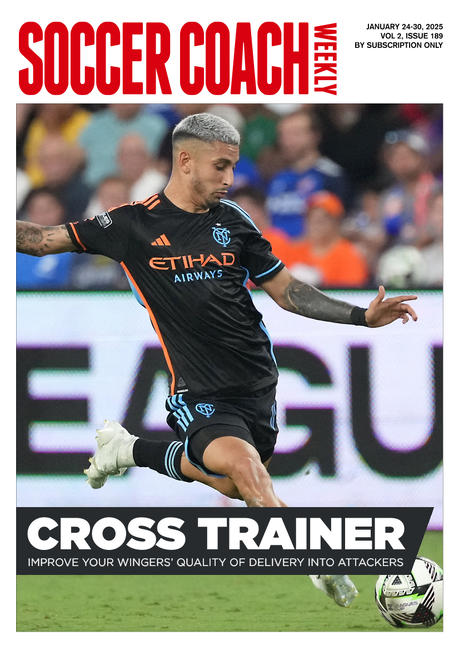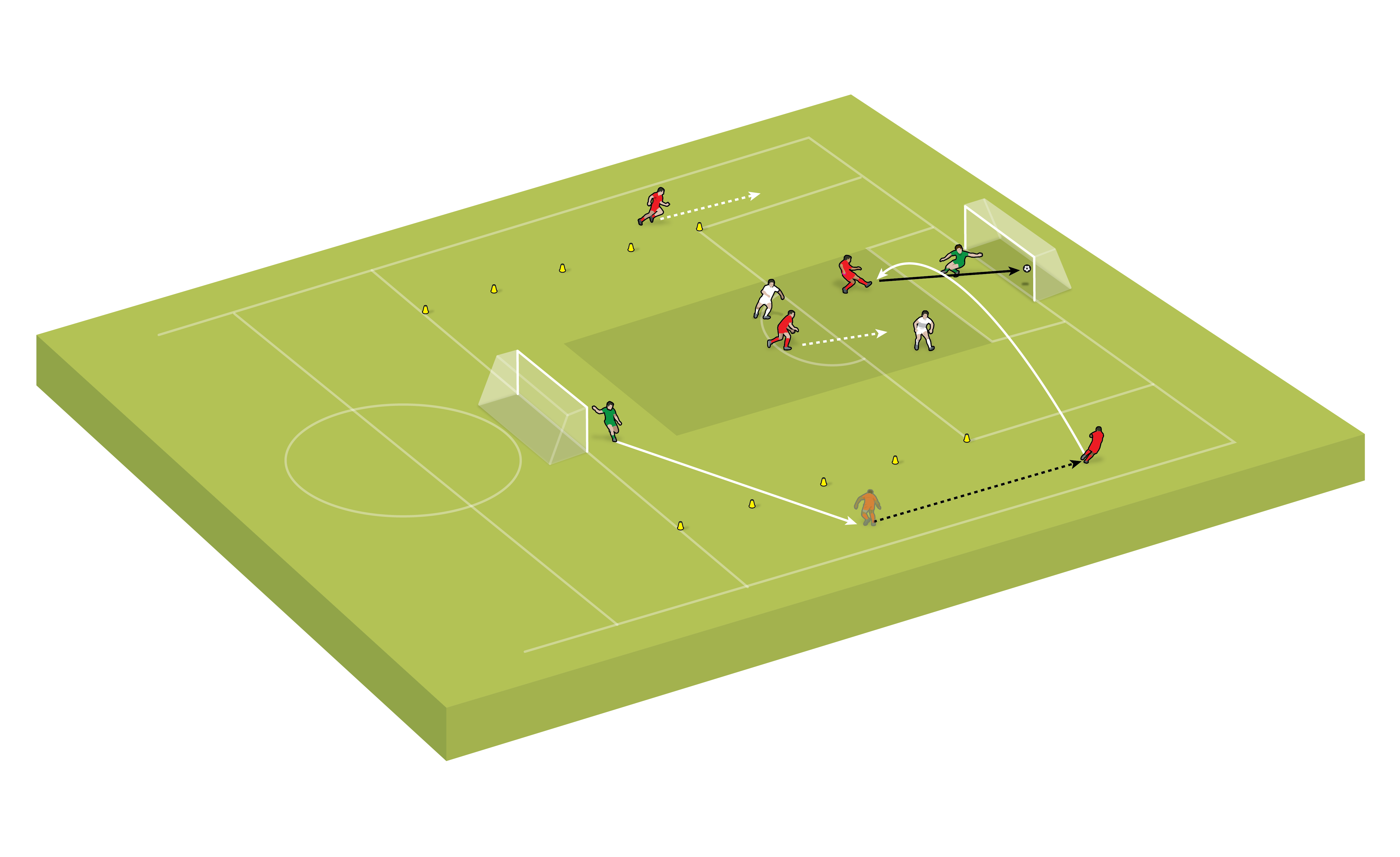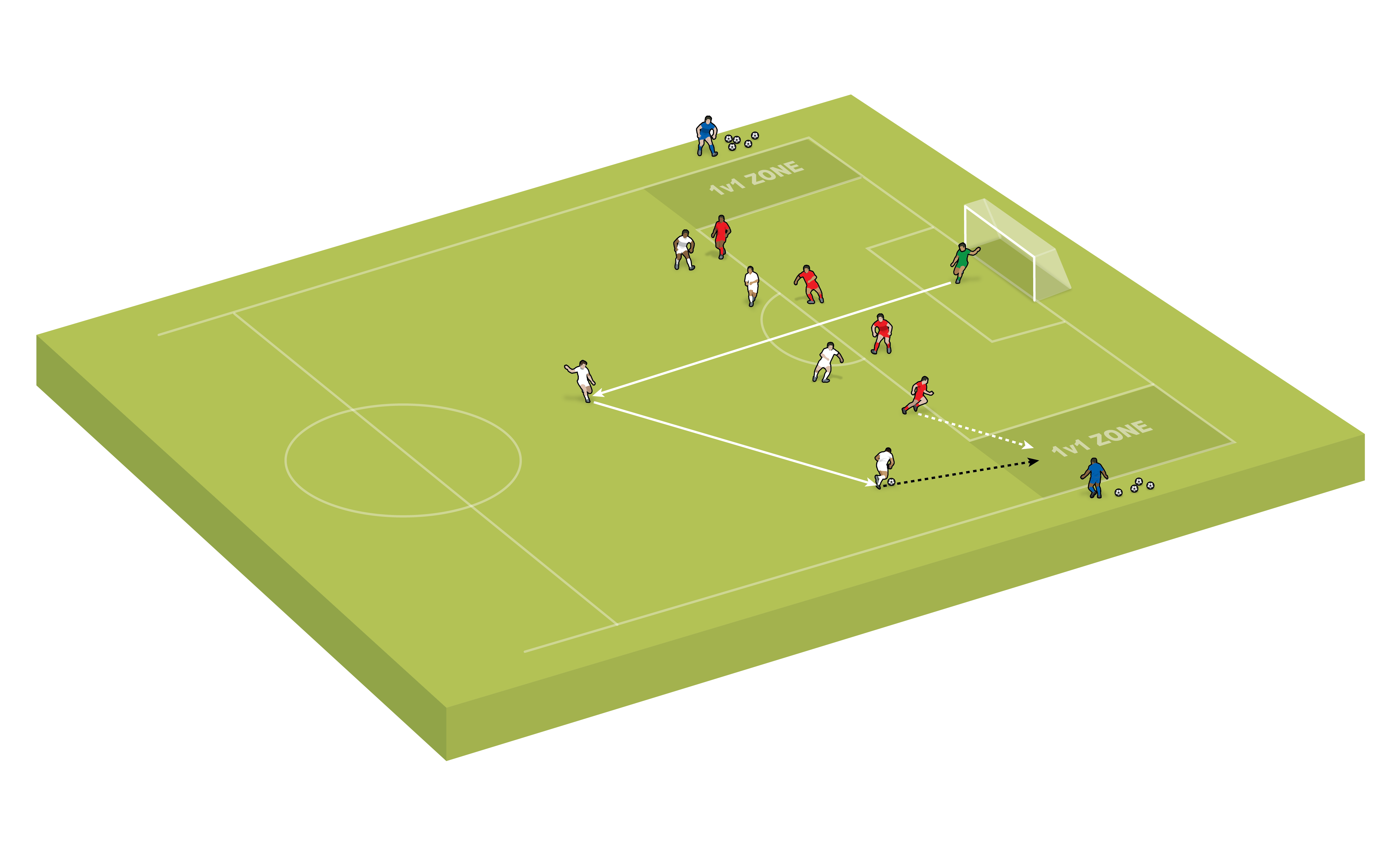The benefits of different coaching styles
Legia Warszawa assistant coach Alex Truman on developing decision-makers.
There are many recurring soccer debates which rarely end with a conclusive answer.
Opposed or unopposed practices? Team development or individual development? High press or low block? Direct or guided discovery coaching? There are no black and white answers to any of those questions.
The more you coach and experience different environments, level of players, pressures and cultures, the quicker you realise the answer is often: ’It depends’.
One question I would like to delve deeper into is: tactical flexibility or specificity?
It is widely acknowledged that in youth development, as a player progresses, the learning journey moves from general areas and broad improvement to specific and narrow focus.
Obviously, there is no specific cut-off point where general practice ends and specific development begins. It is a fluid process, characterised by many variables: How many positions does a player play? How many and what objectives for a game do they have? How much freedom do they have? What are their roles and responsibilities?
Answers to these determine when and how the focus shifts from general to specific development.
Let’s take an extreme, but familiar example, where coaching is focused towards developing a very specific way of playing, and in which players are taught specific positions from an early age with practices focused on developing set patterns.
Although this probably doesn’t sound like a really bad practice, we need to be aware of the consequences of such an approach.
If a player is only ever taught one way to press, one way to build up, and one position, they will probably become competent at these, but limited as a whole.
As a result, they may shine in their early to late teens – but, in stepping into a first-team environment, they are likely to fade away, or find themselves needing a lot of extra work to bridge the gap.
This is because the early success came from narrow focus and, therefore, fewer possible decisions to make, leading to fewer solutions to problems they face on the pitch.
With specific coaching early on, a player may develop specific tools – but these are only good in certain situations. When the environment becomes more demanding, they may find themselves short of tools with which to problem-solve.
"The more problems I present to my players, the more solutions they will have to find..."
At this stage, it is worth considering if, as a coach, I am providing enough variety to challenge players in various situations.
For example, how many passing options are my centre-backs able to execute? In what situations do my strikers feel comfortable scoring from, and is this mirrored in the practices I put on? How many pressing strategies do my players know?
The more problems I present to my players, the more solutions they will have to find, expanding their toolbox. The art of coaching is in setting an optimal level of challenge, so that players have to try hard but are able to overcome.
However, if we are aiming to develop tactically flexible technicians, able to cope in a variety of situations, we are presented with our own challenging task.
Thinking long-term, and providing players with expert soccer development, demands of us an in-depth knowledge of the game.
It also requires the ability to design and adapt practices ourselves, to ask the right questions and to give responsibility for development back to players.
When taken with the tips on keeping development general, and not specific, this approach will help ensure players are ready for the demands of elite soccer.
Related Files
Newsletter Sign Up
Coaches Testimonials

Gerald Kearney, Downtown Las Vegas Soccer Club

Paul Butler, Florida, USA

Rick Shields, Springboro, USA

Tony Green, Pierrefonds Titans, Quebec, Canada
Subscribe Today
Discover the simple way to become a more effective, more successful soccer coach
In a recent survey 89% of subscribers said Soccer Coach Weekly makes them more confident, 91% said Soccer Coach Weekly makes them a more effective coach and 93% said Soccer Coach Weekly makes them more inspired.
*includes 3 coaching manuals
Get Weekly Inspiration
All the latest techniques and approaches
Soccer Coach Weekly offers proven and easy to use soccer drills, coaching sessions, practice plans, small-sided games, warm-ups, training tips and advice.
We've been at the cutting edge of soccer coaching since we launched in 2007, creating resources for the grassroots youth coach, following best practice from around the world and insights from the professional game.







